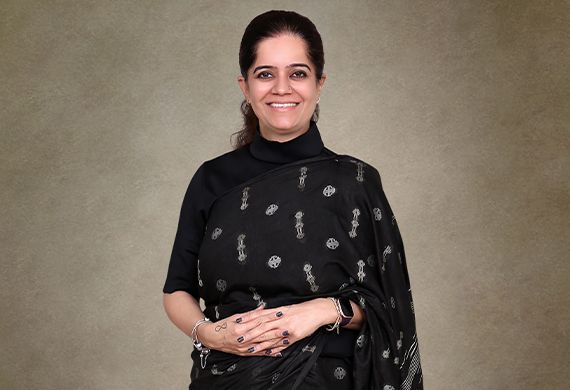
How Legacy Systems Evolve to Enable Scalable Hyper-Personalized Banking
By: Tapasya (Bareja) Vaid, Senior Executive Vice President, CSB Bank Limited
Tapasya is a seasoned customer service leader with over 22 years in the banking industry, known for transforming service into a strategic differentiator. She blends customer-centricity with process rigor, driving digital innovation, grievance resolution, and team enablement while upholding compliance, trust, and service excellence.
In an insightful interaction with Women Entrepreneurs Review Magazine, Tapasya shares her insights on how hyper-personalization, evolving grievance redressal, and authentic leadership, especially by women, are reshaping customer service experiences and mentorship models in the financial sector.
Read her perspectives below.
Given the current shift towards hyper-personalization in banking, how do legacy systems hinder or enable tailoring service experiences at scale across diverse customer segments?
Legacy systems are foundational to banking operations, often lack the agility needed to support personalized or customized experiences at a growing scale. Given their non-flexible approach, the deployment of data-driven insights and adaptive interfaces gets slowed down. However, with thoughtful API led integrations and layered architectures, legacy platforms can be modernized to work alongside new-age systems, enabling personalization. At our bank, we overcame this by layering customer intelligence tools over core systems – enabling us to tailor the customer journey. Legacies need smart integration that can act as a powerful enabler.
As customer trust becomes a differentiator in today’s competitive market, how are grievance redressal mechanisms evolving into strategic touchpoints rather than operational fixes?
Today, GR is no longer a back-office function; it’s a brand-building moment, it’s a moment of truth for a customer. Modern grievance frameworks must evolve beyond resolution; they should reflect how deeply we listen, require proactive communication, sentiment analysis, personalized resolutions, and whatnot. By capturing feedback loops, banks are turning complaints into insights and thereby enhancing customer lifetime value. These mechanisms now serve as listening posts, helping organizations pivot and design their services aligned with customer expectations.
In today’s volatile talent market, how can women executives build resilient service teams that outperform in both experience delivery and compliance adherence?
Talent retention today needs more than rewards; it needs trust and purpose, clarity & care. In my experience, teams outperform when they are heard and enabled. Women leaders are uniquely positioned to foster psychological safety, ensuring teams deliver not only with accountability but also their heart, even across diverse geographies. I have led service teams where consistency was not driven by command but by connection. We implemented micro recognition programs, which helped improve compliance and morale. Women leaders create balance where teams feel emotionally secure and professionally valued.
How can women at the helm of customer services redefine mentorship models that accelerate both professional growth and values-based transformation in financial institutions?
Customer service is one of the richest grounds for leadership authenticity as it demands presence, empathy, and courage every single day. Authenticity in leadership isn’t about perfection – it’s about presence. As a woman in Customer service leadership, I have learned that mentoring works best when it's mutual. I have grown just as much from listening to new joiners’ field stories as from boardroom discussions. Service roles give women the opportunity to lead quietly yet powerfully. They are the culture carriers for a bank. In our team, we have ‘storytelling circle meets’ which are purely experience-sharing platforms, which are non-performative, raw, and powerful.
With increasing regulatory scrutiny and digital adoption, how do you ensure service compliance enhances rather than disrupts branch-level customer intimacy and efficiency?
Compliance and customer intimacy need not be at odds; compliance is an enabler, through digitized checks, contextual nudges, and staff training, allowing frontliners and customer-facing teams to uphold regulatory standards without compromising on empathy or speed. If designed well, the compliance protocols can reinforce trust and deepen the customer relationship rather than dilute it. Compliance has to be meaningful and not mechanical, and then it strengthens the trust bridge. It's about making regulation invisible to customers but impactful to the experience.
In today’s hybrid banking era, how can quality indices be reimagined to measure emotional connection and experiential consistency across physical and digital touchpoints?
Traditional quality indices must evolve to include emotional metrics like perceived trust, effort, and confidence. We are embedding real-time feedback tools, predictive analysis, and digital emotional mapping into our evaluation framework. The aim is to create a unified experience where the customer feels valued and understood, through all their touchpoint interaction, be it a branch or via app, or by call. Emotional connect with customers is a real metric, and blending it across digital and physical channels is our next frontier.
In a landscape where legacy culture often resists change, how can compliance officers and service professionals turn into internal transformation ambassadors?
Transformation thrives on ownership, not just mandates. We actively identify and empower “change champions” within existing teams- people who understand ground reality and strategic vision. By aligning transformational goals with their professional aspirations and giving them access to mentoring, recognition, and impact platforms, we foster advocacy from within. This creates a ripple effect, making change culturally owned and not just institutionally driven.






